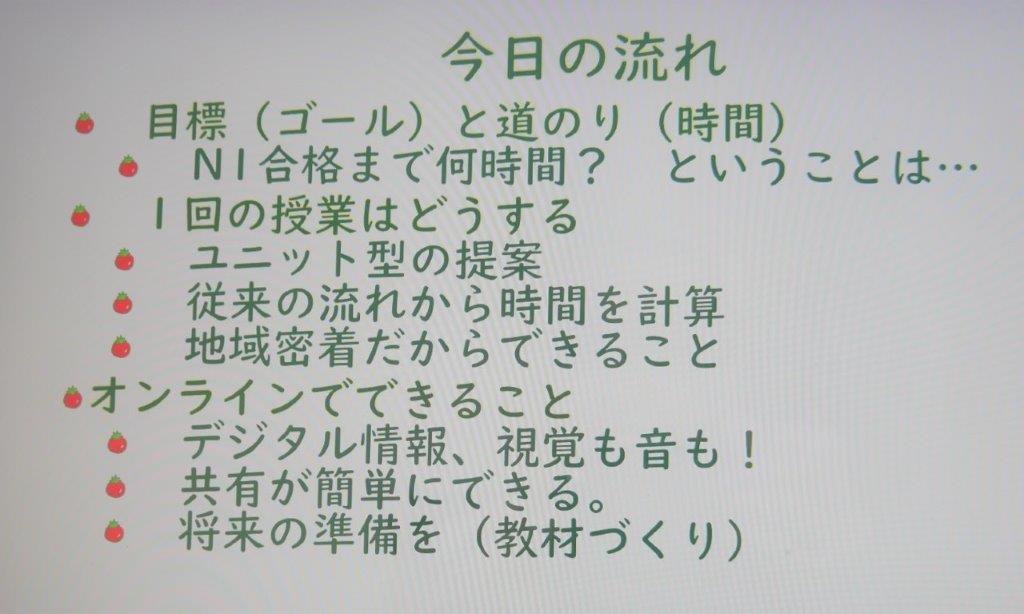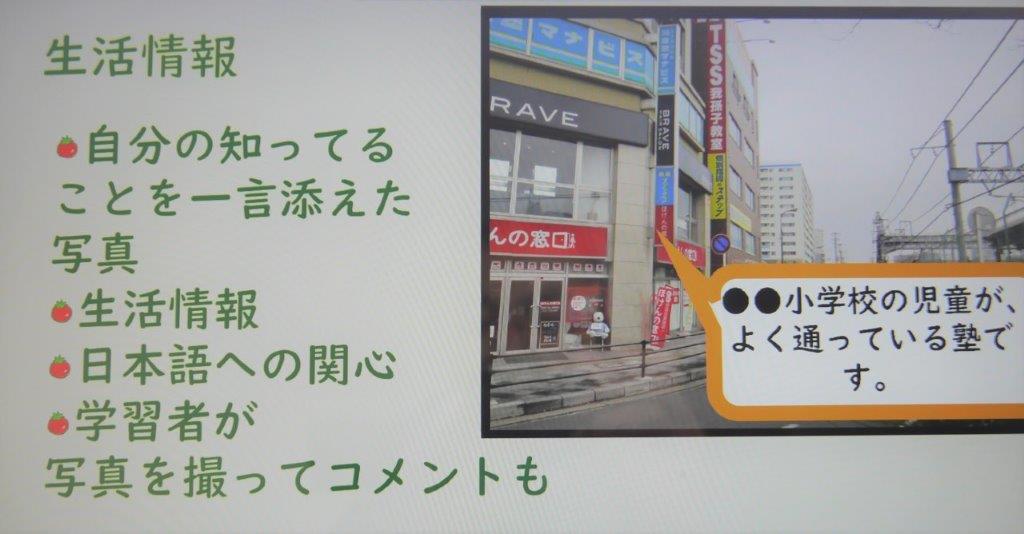
Date & Time: Saturday, September 18, 2021 1:00 p.m.- 3:10 p.m.
Venue: Online (Zoom)
Instructor: Mr. Hiroyuki Nishikawa (Associate Professor of Japanese language and Japanese education at Meikai University)
Theme: “Image of one lesson for planning a yearly schedule – What we can do online now”
Attendees: Twenty-seven AIRA Japanese volunteers
AIRA started “Japanese Language Classes for Foreigners” in 1993. About thirty volunteers teach on Tuesdays and Saturdays now. Since last spring the classes have been held online due to the pandemic.
Last year AIRA held a lecture for the volunteers titled “How to Teach Online, The Basics”. This year another lecture was held with a view to further improving their teaching skills.
After the opening remarks by Mr. Goto (the emcee, a Tuesday class volunteer) and Mr.Hesaki (Director of Volunteer Services), Prof. Nishikawa’s lecture started.
Prof. Nishikawa has been studying Japanese teaching methods to fill the gap between “Japanese studied in class” and “Japanese spoken in daily life”.
The content of the lecture was as follows.
1. Goal and required time
It is said that it takes 150 hours of lessons for a beginner to pass N5 of Japanese Language Proficiency Test (JLPT). JLPT has five levels: N1 – N5. The easiest level is N5. It is necessary to take 300 hours to pass N4 and 450 hours to pass N3.
For example, if a student takes two-hour lessons in a class held by volunteers once a week, it takes him/her more than three years to pass N4.
In volunteer classes the teachers should always set a goal for each lesson, in other words, they should keep in mind what skills they will have the students acquire in the lesson.
Prof. Nishikawa suggested “a unit-style lesson”, which means a lesson plan that completes in each lesson, to achieve this goal.
This is a lesson plan to unite students’ experiences and the textbook, which is possible because the lessons are given to the students living in the community.
The image of this plan is that the teachers, using pictures or videos, teach Japanese language through talking about living information such as bargain sales, hospitals, how to order take-out at restaurants, and so on. In order to do this, it is necessary to prepare pictures and videos in advance. And more preferably, students can access them on the net anytime.
2. What we can do on the net
In online lessons teachers can make use of visual and audio materials. It will be better if students also join in making these materials.
Pictures with comments are effective. For example, a picture of a shop with a comment about the prices, location, etc. will be more interesting than just a picture.
And the students can study by themselves anytime if they can access these materials on the net.
Prof. Nishikawa suggested that the volunteers make teaching materials and stock them online, like on AIRA’s website, so that both the teachers and the students can see them anytime.
(Translated by Chizu Yamaguchi)


